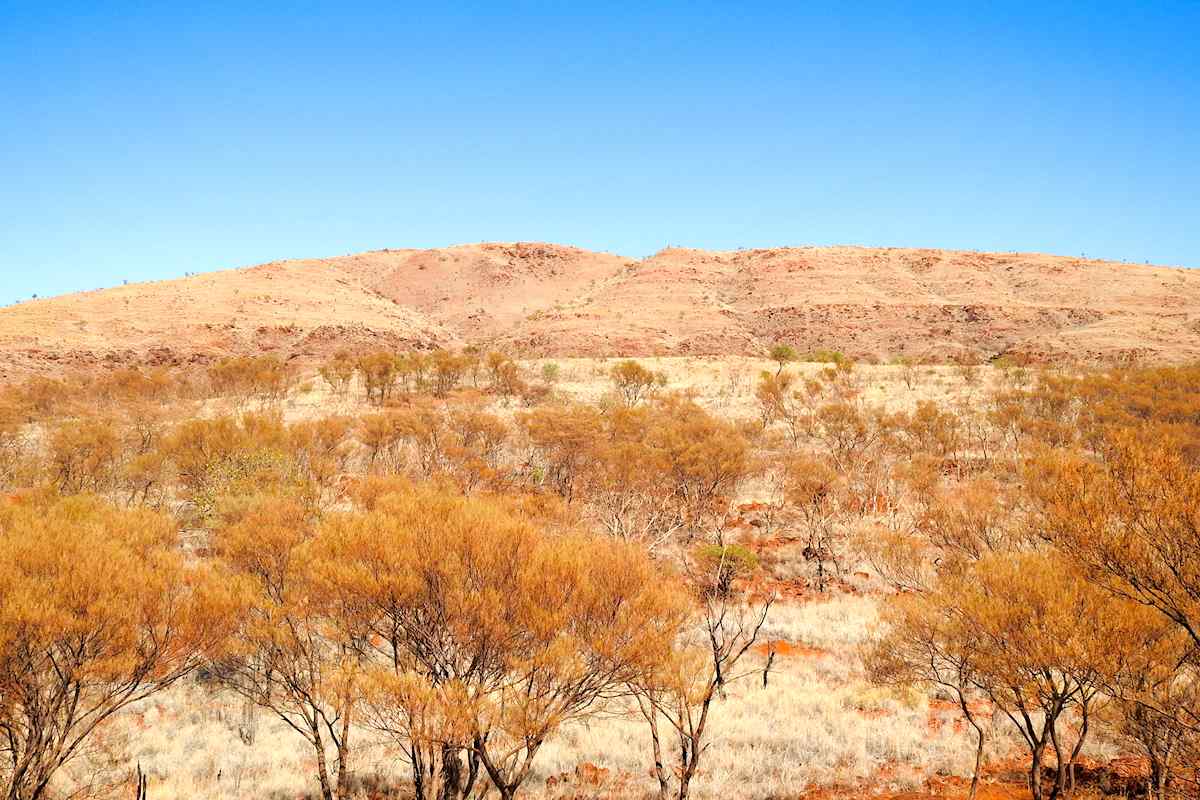Heading back to the coast from Karijini, I headed through the rich, red Pilbara, hurling myself out of the way of the massive road trains I encountered along the way.
I passed close to the ghost town of Wittenoom. Known for its blue asbestos mine opened in the mid-1940s, the streets of the town were literally paved with asbestos tailings. As the dangers of asbestos were realised in the 1970s, the town was officially closed down. Today, this is thought to be one of the most contaminated places on the planet and is officially struck off new maps, with the name of the town removed from road signs in the area.
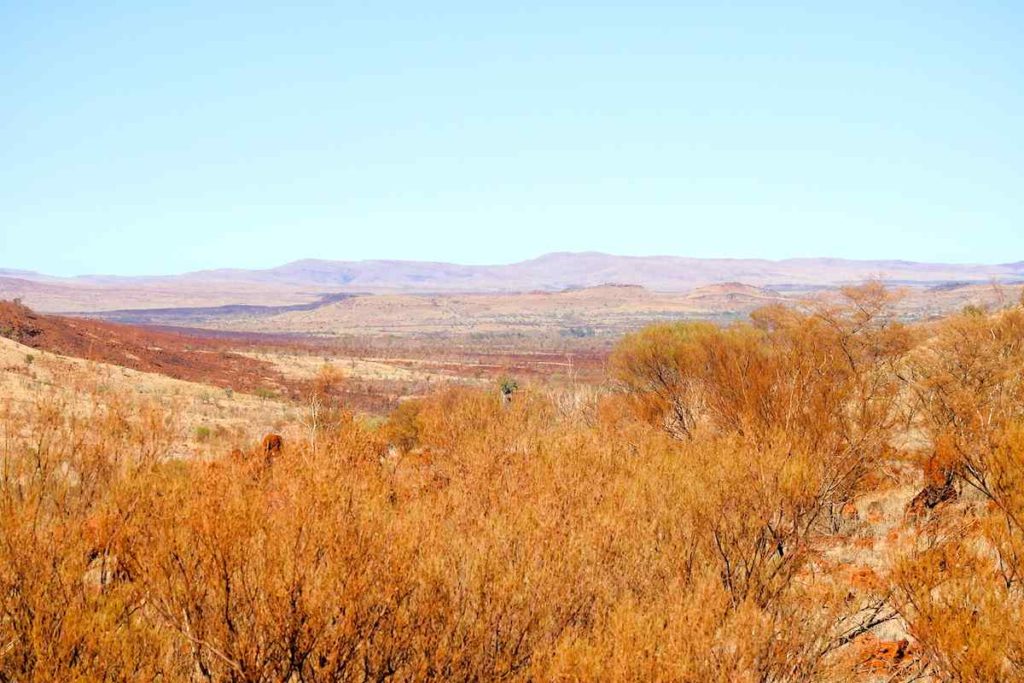
Veins of blue asbestos are visible in some cliff faces in Karijini National Park, but in this form it is apparently relatively safe – so the warning signs tell us…
Onslow
Onslow is a town on the north-west coast of WA. It is perfectly placed to encounter almost every cyclone that approaches this part of the coast and Onslow seems to get walloped about every two years.
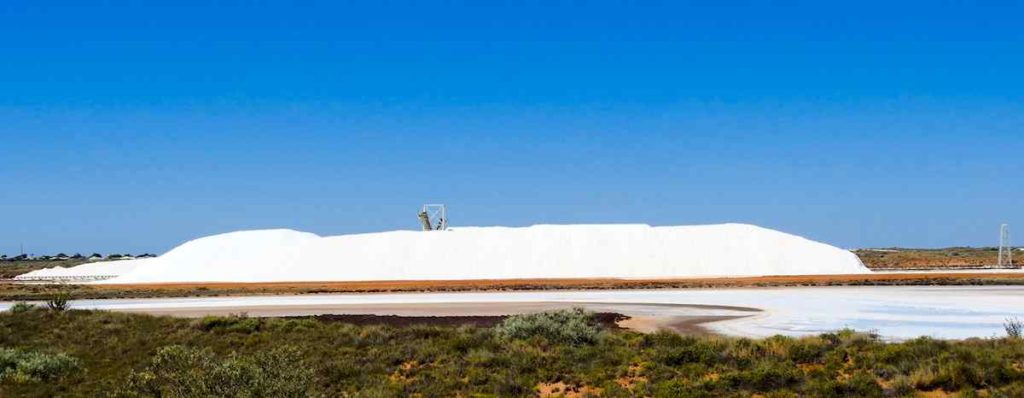
Onslow is mainly known for salt. There are numerous lakes around that are filled with sea water and left to evaporate, leaving behind lots of well, salt.
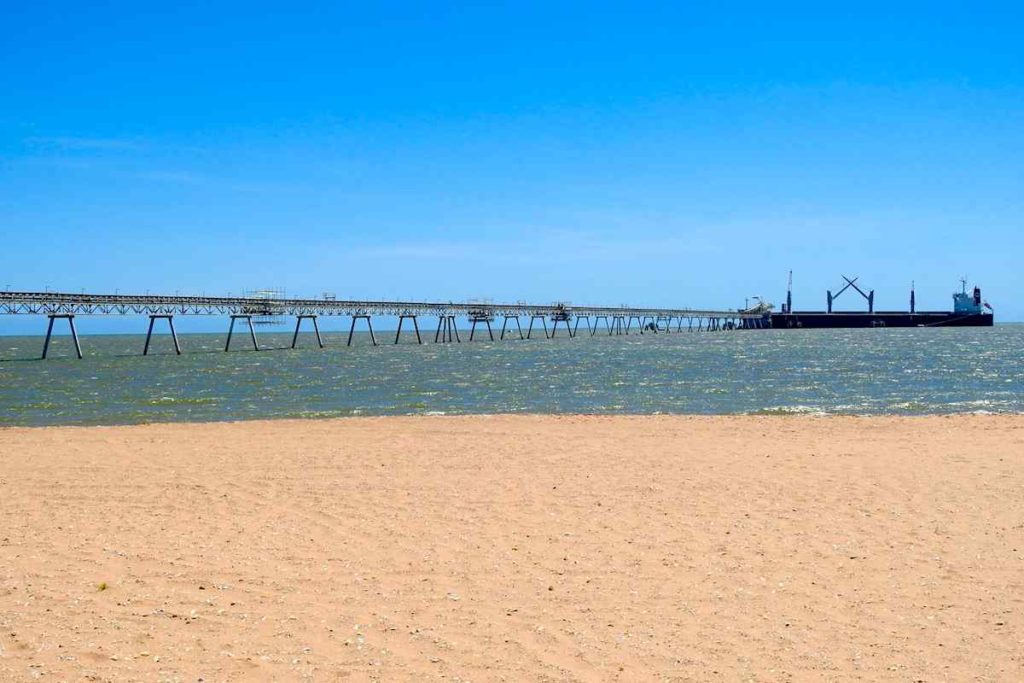
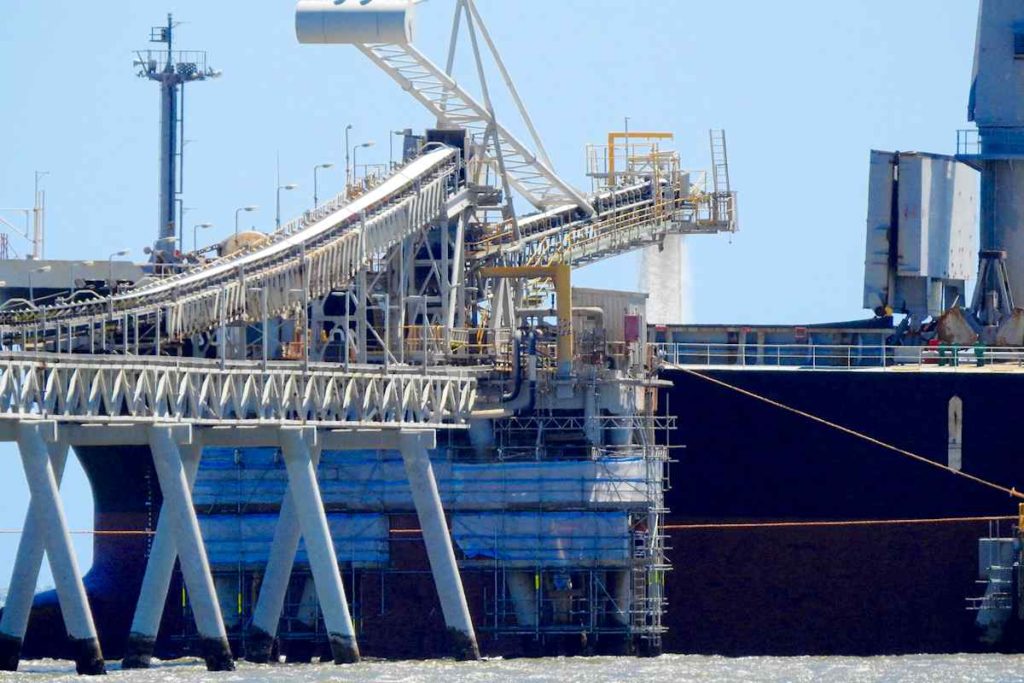
There are literally mountains of salt and they load up the big salt ships from the salt jetty here, too.
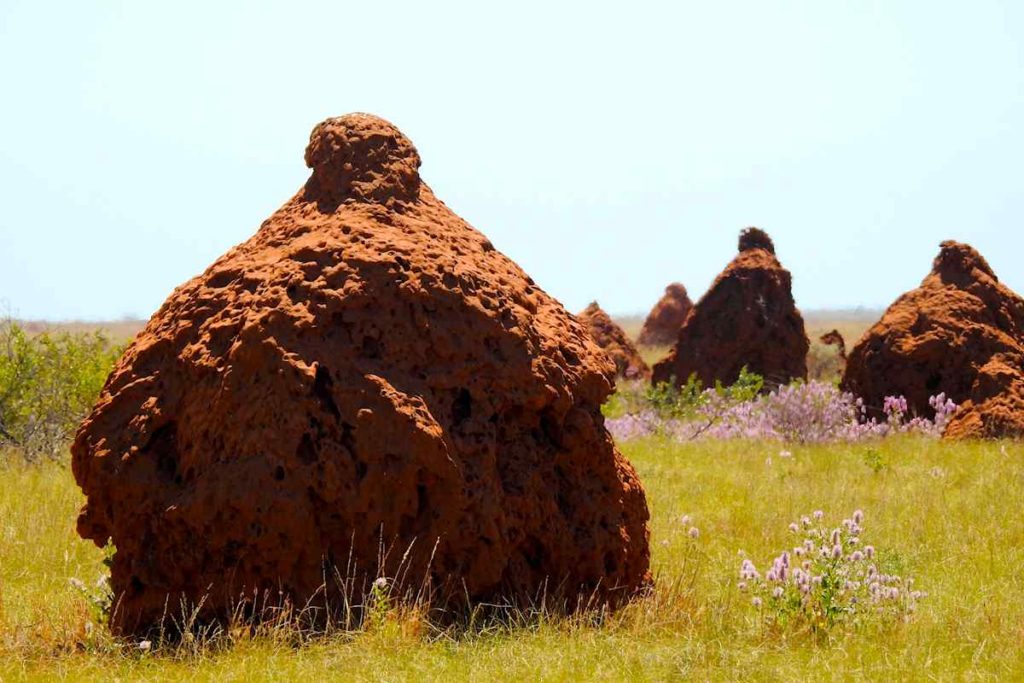
Oh, Onslow is known for termite mounds, too.
The North-West Shelf
Dampier and Karratha are the two most important towns located fairly close to each other, also on the north-west coast.
Karratha is the service town for the area, and is very new and modern. The town centre comprises a large shopping centre and like most of these, once you are inside, you could be anywhere. The modern housing seems to consist entirely of massive McMansions and every house seems to have a large boat parked outside.
Dampier is a massive port on the Dampier Archipelago, named after the English captain. William Dampier (who was also a pirate), lived here for several months in 1699. Today, this little town is where gigantic ships are loaded with iron ore and liquid natural gas for export.
The loading takes place 24 hours a day, seven days a week and this entire area is incredibly industrialized and noisy. Everywhere is coloured by the ubiquitous red dust that covers everything here.
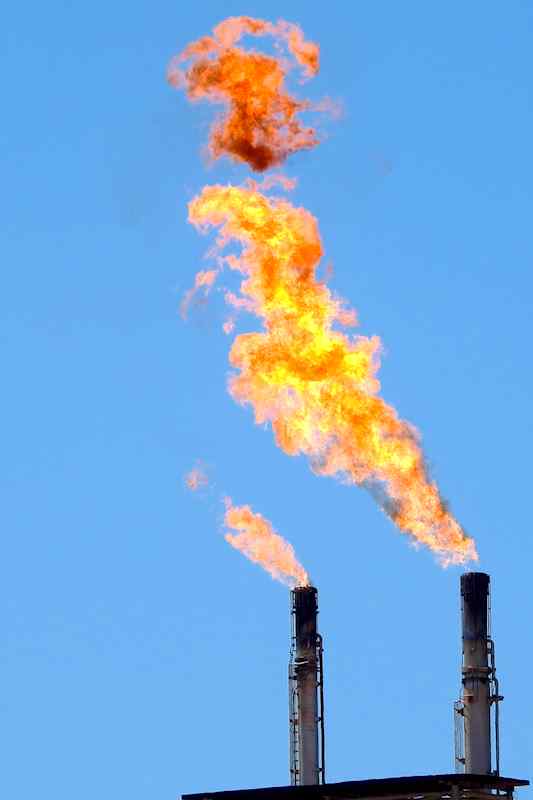
The Karratha Gas Plant received natural gas (and oil) from 135km offshore and processes it here, to be loaded into the massive LNG ships that come in. There is a visitor centre which explains it all, but you can’t get too close to any of it. I managed to get a glimpse of one of these massive ships being loaded at the time.
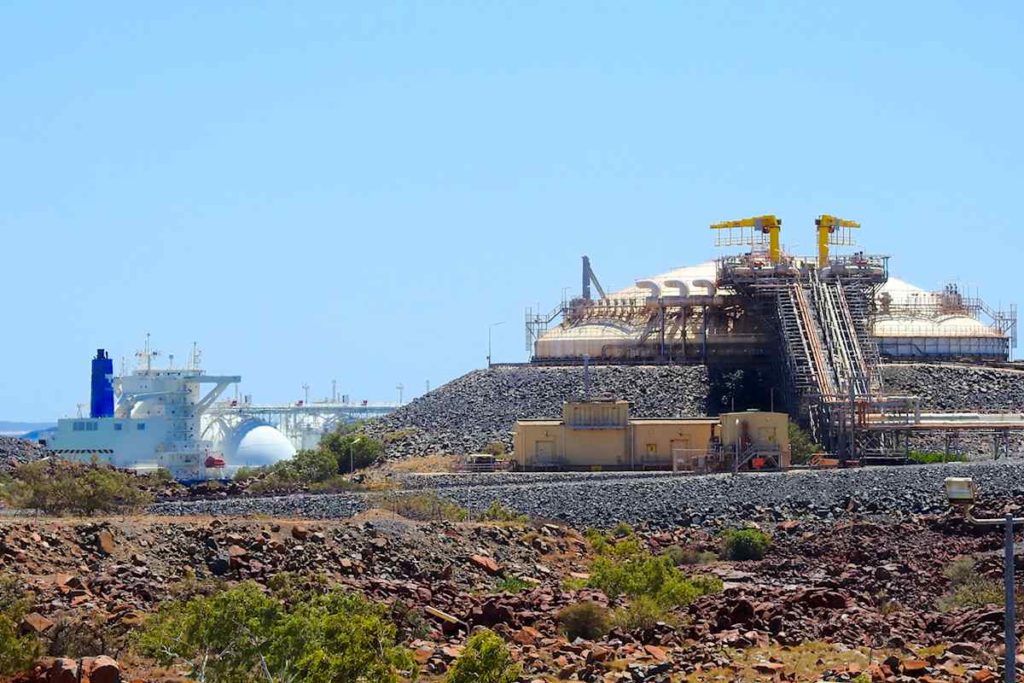
The iron ore ships load up at Dampier, which can accommodate four ships at a time. The caravan park is located just opposite the port, so you get a really good view of the operation happening (unfortunately you also get to hear it and experience that lovely, pervasive red dust, if the wind is blowing in the right direction).
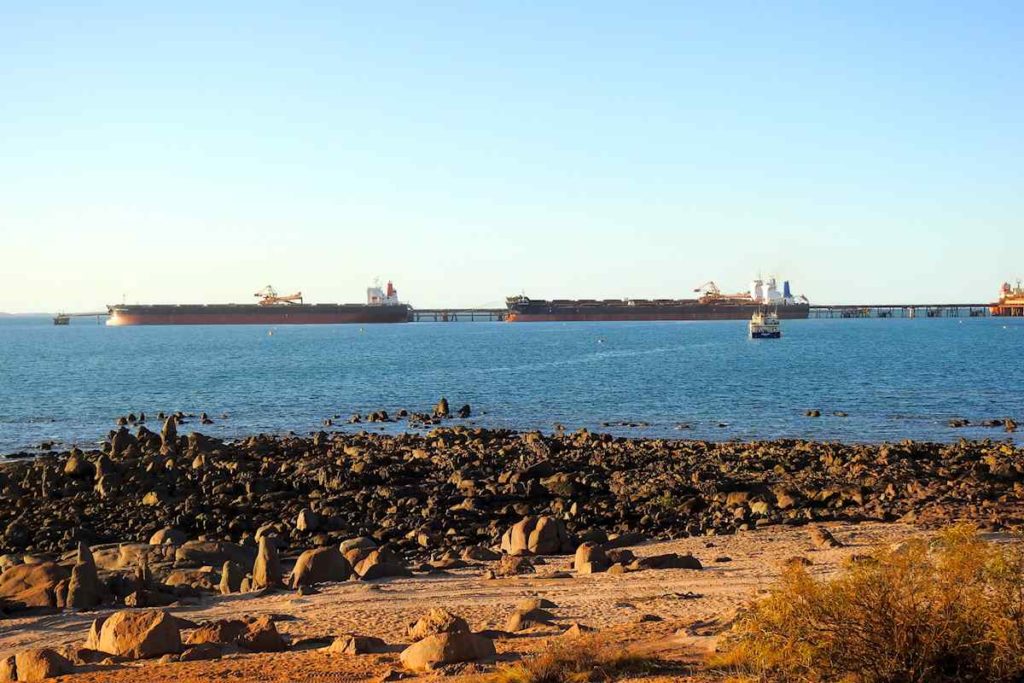
It is actually quite fascinating watching the ships come in to berth. It happens very quickly and efficiently, with the massive ships guided by plucky little tugs. Once the ship is berthed, loading commences immediately, with massive moving boom arms ensuring the ship is loaded evenly.
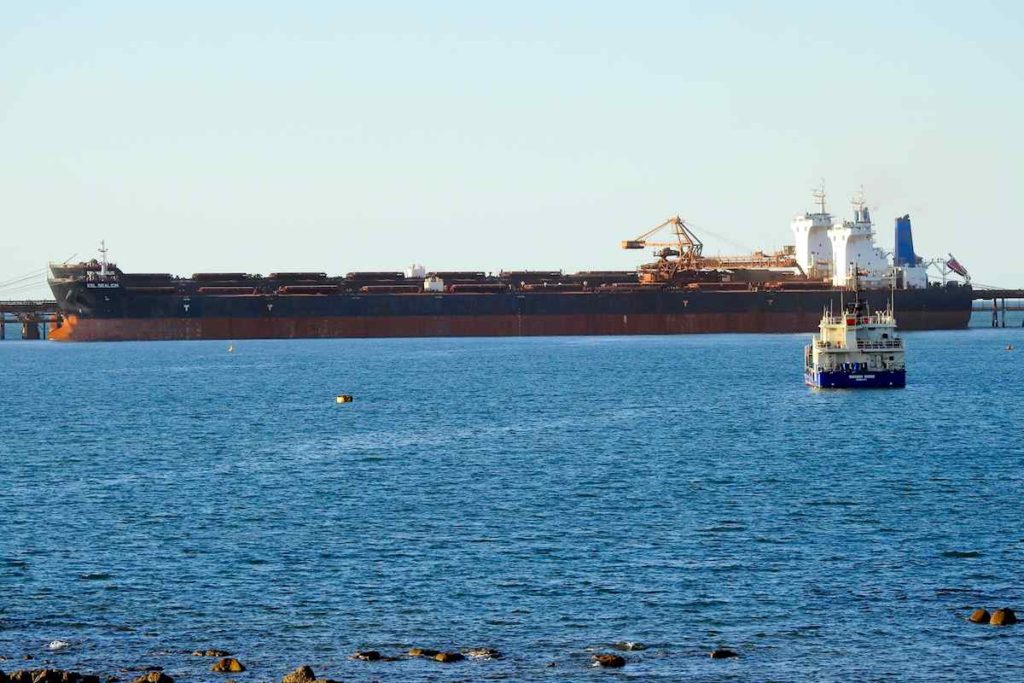
The loading proceeds for 24-36 hours, with the ship noticeably settling much lower into the water over that time (the ship will sink 30 feet lower into the water when fully loaded). Once full, that ship heads out and another one is brought in, with loading taking place constantly.
The iron ore is delivered to the port from the mines by rail. These are privately run railways and some figure may help to illustrate why this is all considered extremely important in WA!
- The trains consist of three or four engines hauling around 260-270 wagons, each carrying up to 120 tonnes of iron ore
- So each train is around 3km long (if you are caught at a level crossing, you are there for AGES, waiting for these freaking trains to pass) and carries around 29,000 tonnes of ore in total
- So, I guess that means each train carries around $2.6 million worth of ore
- Trains running from the mines into the port and back have a turnaround of about 28 hours, with a fully laden train leaving the mine and heading to port every 20 minutes or so, 24/7
- Train operation and unloading at the port is fully automated, with the process all controlled from Perth, 1,500km away
- Some of the bigger tanker ships carry up to 400,000 tonnes of ore (you do the math…)
Deep Gorge
Located right next to the massive industrial complexes of gas processing plants near Dampier, a little known area takes you back thousands of years into the past. A narrow path takes you along the rocky and stony bed of a dry creek.
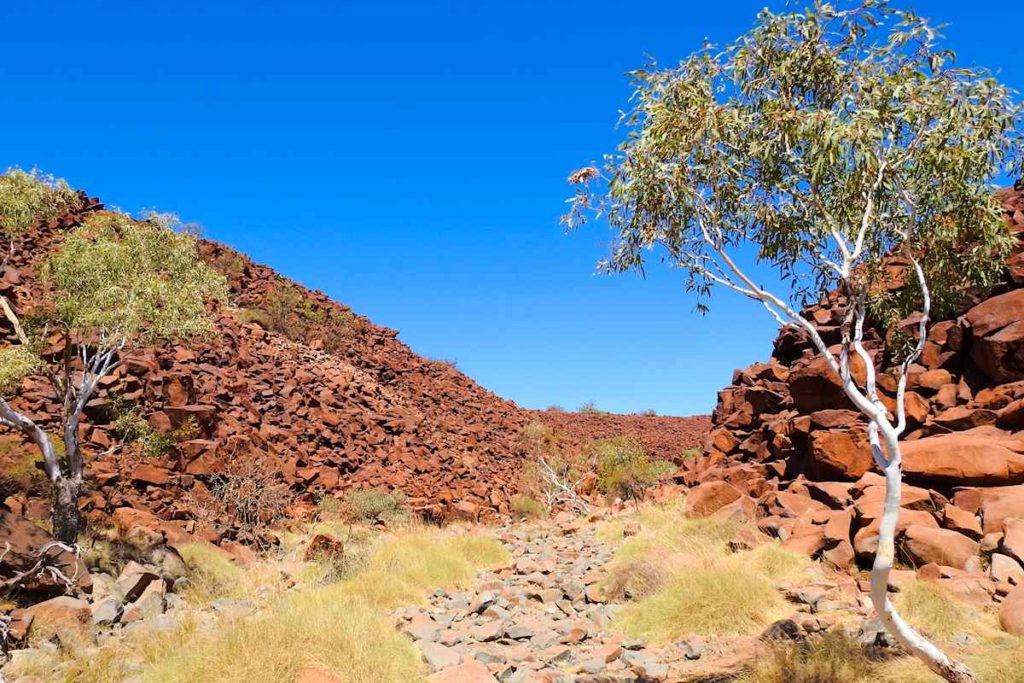
It was a hot day and the sun was fierce, striking the red rocks and creating an amazing contrast between the rocks, the blue sky, yellow spinifex and the white bark of the Snappy Gums.
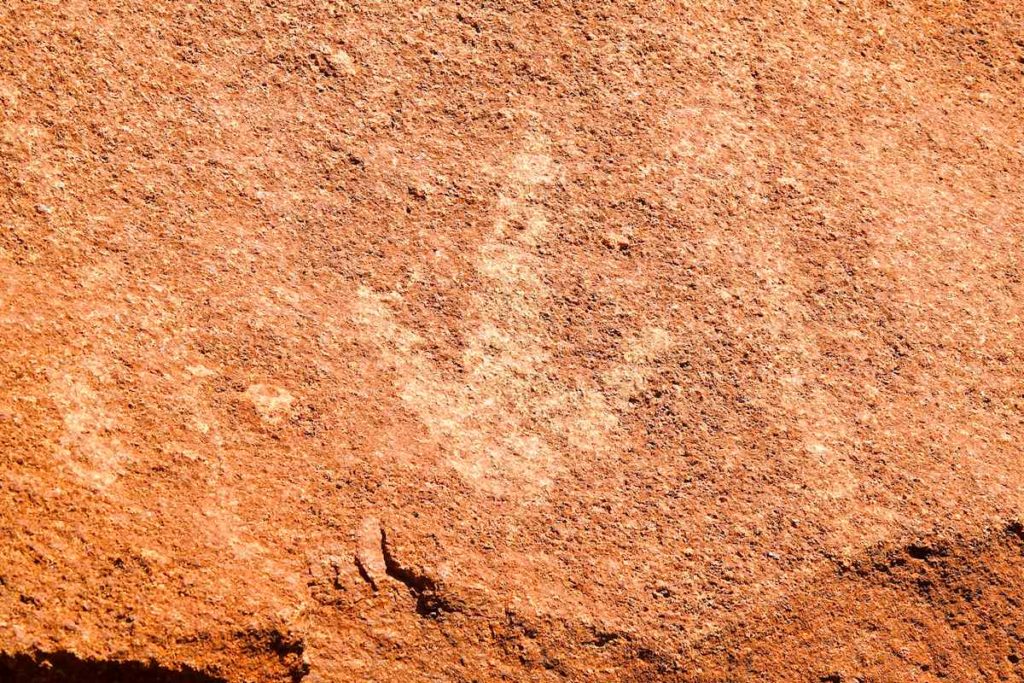
Aboriginal people used these striking red rocks for their artwork.
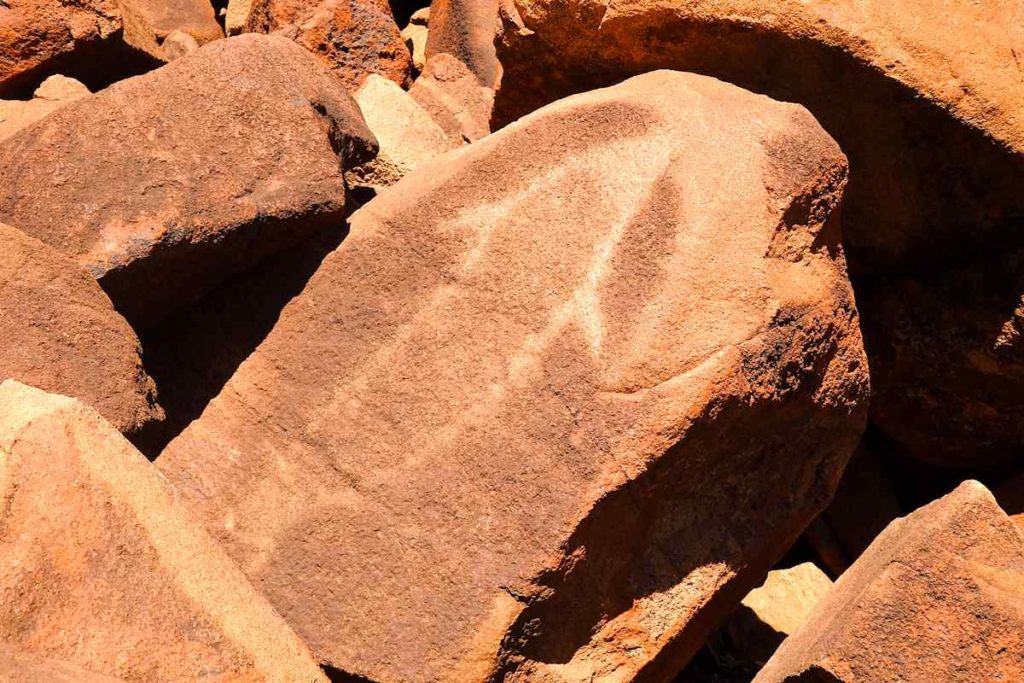
There are no signs pointing you in the right direction, but as usual, the more you look, the more you see and after a while you realise there are amazing images carved into many rock surfaces.
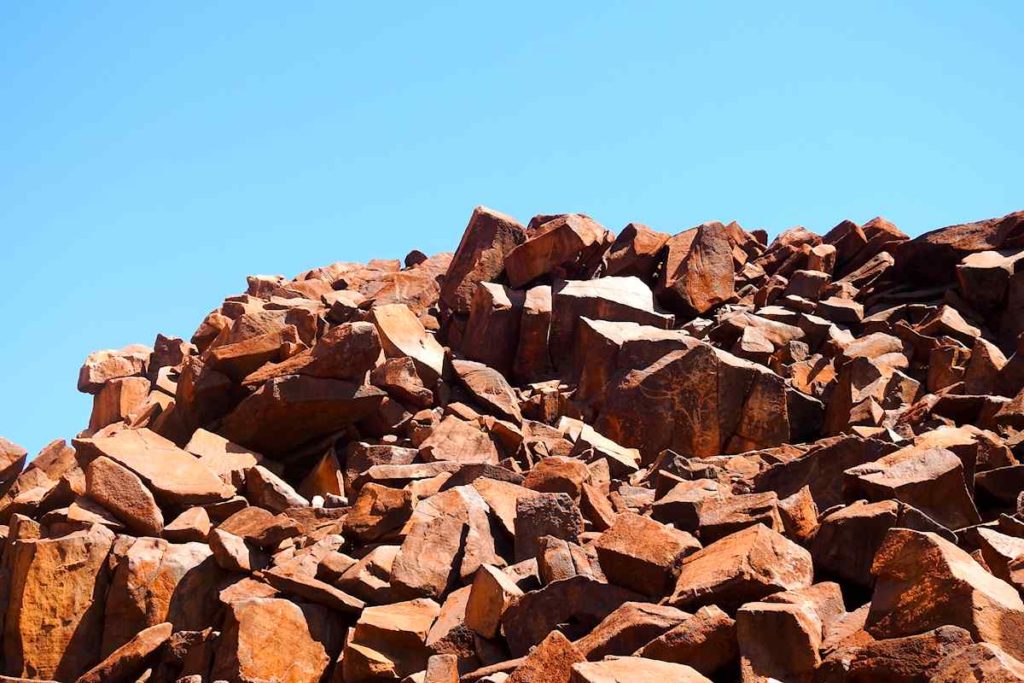
It is believed some of the artwork could be 40,000 years old.
Red Dog
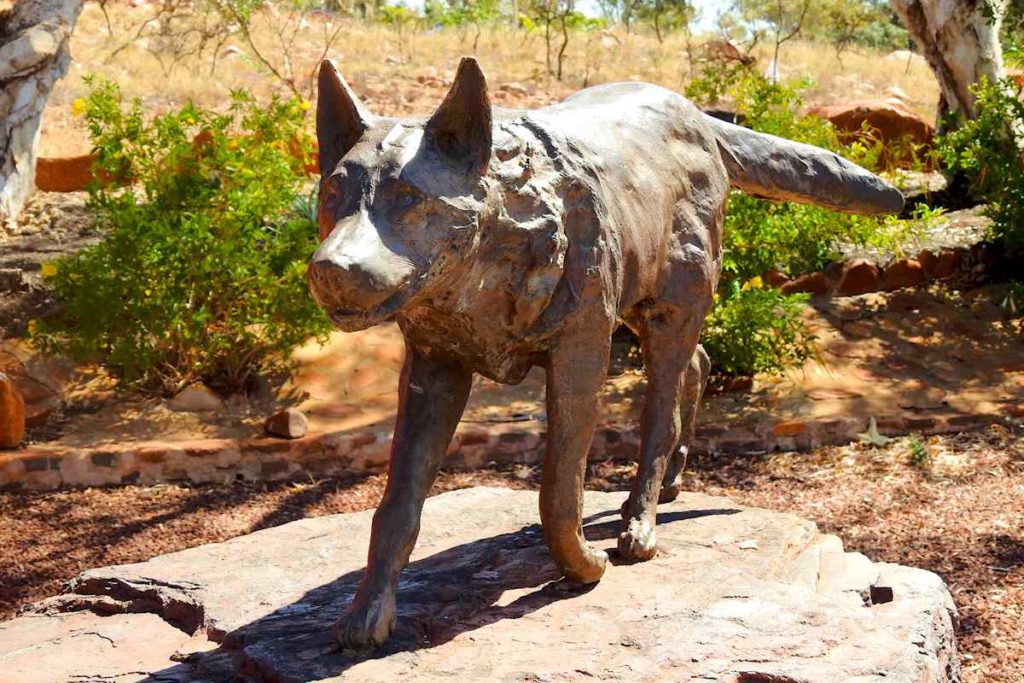
Dampier is also the place that Red Dog called home. A statue here remembers this amazing dog and his adventurous life, travelling through the Pilbara region.

